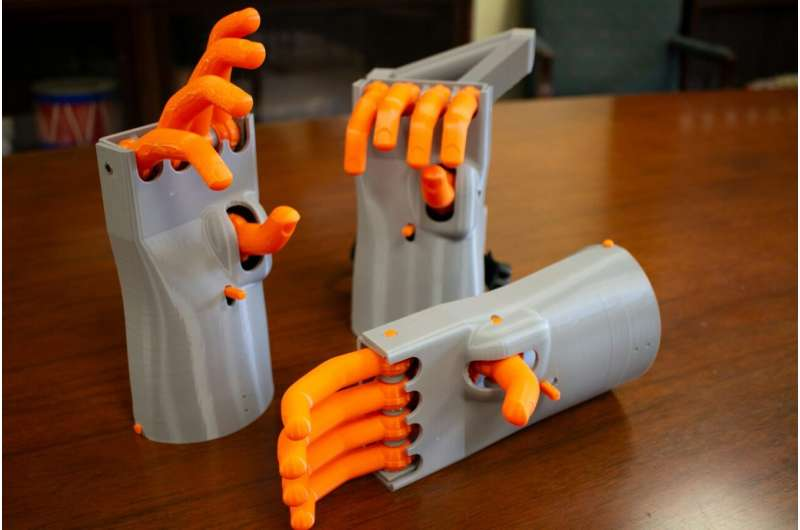Technology is never just about mechanics—at its heart, it's about people. A 3D-printed model of a 500-year-old prosthetic hand is helping modern researchers bridge centuries to better understand the lived experience of a Renaissance amputee.
To consider an artificial limb is to consider a life. A prosthetic is a tool built for the body—one that touches, moves, and interacts with the world. Yet surviving historical examples of prosthetics are static, fragile, and stripped of their human context. Time and decay have left them inert, tucked away in museum cases, their users long gone.
These rare artifacts offer one of the few direct connections to the lives of amputees in the 16th and 17th centuries. Written records from amputees of the period are scarce, and those that exist reveal little about what it meant to live with a prosthesis day to day.
Now, historians and engineers are turning to technology to reconstruct those forgotten experiences.
Bringing the Kassel Hand Back to Life
Mechanical prosthetic hands emerged in the early 1500s—a revolutionary moment in the history of disability and medical innovation. But most surviving examples, like the Kassel Hand, are incomplete, nonfunctional, or of unknown origin. Their mechanical function remains poorly understood.
To change that, researchers from Auburn University, in collaboration with mechanical engineer Chad Rose and a team of students, used computer-aided design (CAD) and 3D printing to recreate the inner workings of the Kassel Hand—a 16th-century German iron prosthesis, one of only about 35 known from the period.
Rather than merely speculate on how the device worked, they built it. And tested it.
“We wanted to understand the life of the person who used this hand 500 years ago,” says Heidi Hausse, an early modern historian leading the project.
By printing the hand in lightweight polylactic acid (PLA) plastic, the team made the design accessible for anyone with a consumer-grade 3D printer. But before sharing the model publicly, they needed to see how it held up in real-world conditions.
A Lesson in Fragility
In March, Hausse carried a carefully packed 3D-printed Kassel Hand model to a guest lecture at the University of Alabama at Birmingham. After years of work and excitement, disaster struck just 15 minutes in: the release lever snapped.
This lever, a key component of the prosthesis, locks the fingers in place and triggers their release. Without it, the hand can’t function. Oddly, the break had never occurred during prior testing—even when the model lifted a 20-pound load.
Was it a material flaw? A design oversight? A printing error?
The team turned to their “Hand Whisperer,” a graduate student in mechanical engineering who had assembled the models hundreds of times and knew every nuance of their behavior.
Engineering Insights
For the Hand Whisperer, the break wasn’t shocking.
“I’d seen that lever break many times during quality control,” the student explained. “But never in public use—until now.”
PLA plastic, while easy to work with, lacks the strength of the original iron. The historical lever would have been five times stronger. But the real culprit wasn’t material weakness—it was user error.
Unlike the engineering team, who had developed an intuitive feel for the model over years of handling and testing, new users didn’t know how much pressure was too much. The team hadn’t realized they had unconsciously learned the prosthesis’ limits through practice.
The original user of the Kassel Hand likely had to do the same.
Relearning the Past
This insight reframed the issue. The problem wasn’t the model—it was unfamiliarity.
So the team made a plan:
The engineers redesigned the model slightly, shortening the release lever’s opening to prevent overextension. Ironically, this tweak made the model more historically accurate, as the larger opening had only been required for earlier prototypes.
The historians created a short instructional video demonstrating how to operate the hand—how to lock and release the fingers and troubleshoot stuck components.
One week after what they dubbed “The Birmingham Break,” the team tried again—this time with four modified models and a classroom full of students at Auburn.
First, they played the video. Then, they handed over the prosthetics.
Not a single lever broke.
Technology and Touch
The experiment proved a key point: just like its 16th-century counterpart, using the Kassel Hand requires learning, practice, and patience. The user is part of the mechanism.
“Technology isn’t just about design—it’s about people,” the team reflected.
“How they use it, adapt to it, and learn from it.”
This project is more than a reconstruction of a mechanical hand. It’s a reconstruction of experience—a way to understand how a Renaissance amputee might have lived, struggled, and adapted with the help of human-made technology.







